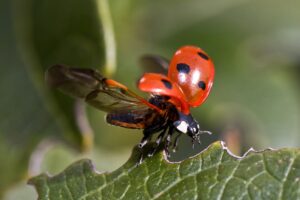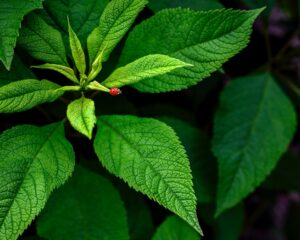By Rodaportal
INTRODUCTION
Ladybugs, also known as ladybirds or lady beetles, belong to the Coccinellidae family, encompassing a vast array of species, around 5,000 identified worldwide. These colourful insects play a crucial role in maintaining ecological balance, primarily due to their voracious appetite for soft-bodied pests. Ladybugs are typically recognized by their dome-shaped bodies and bright colouration, often red or orange with black spots or markings, serving as a natural warning to potential predators.

Their vivid colouration, known as aposematic colouration, isn’t just for show; it’s a defence mechanism. These colours signal toxicity to predators, warding them away. This phenomenon, where predators learn to associate specific colours with toxicity, aids ladybugs in avoiding being eaten.

Ladybugs are highly beneficial to agriculture and horticulture. They are voracious predators, particularly fond of aphids, mites, scale insects, and other pests that damage plants. Gardeners and farmers widely embrace these beetles as a natural, eco-friendly pest control solution. A single ladybug can consume an astonishing number of pests, with some estimates suggesting they can consume up to 5,000 insects in their lifetime.
The name “ladybug” has historical and cultural significance, harking back to the Middle Ages when farmers faced devastating crop losses due to pests. Legend has it that farmers, in their desperation, turned to the Virgin Mary for help. In response, ladybugs appeared and effectively decimated the pests, earning the nickname “our lady’s bug,” which eventually evolved into “ladybug.”

Ladybugs even made an appearance in space! In 1999, as part of a NASA experiment, these resilient creatures were sent on a space shuttle to observe their behaviour in a zero-gravity environment. Surprisingly, they not only survived but also continued their natural feeding behaviour, consuming aphids even in microgravity conditions. Their adaptability and resilience hint at their potential for surviving in diverse and challenging environments.
If you’re curious to learn more about the fascinating world of ladybugs, consider watching this YouTube video (https://youtu.be/_fdRFWZYakM) for an in-depth exploration of these incredible insects, their behaviours, and their crucial role in our ecosystems.
